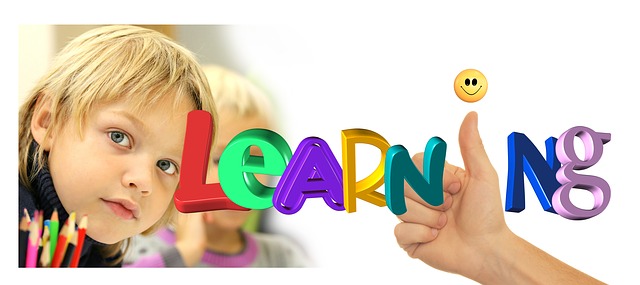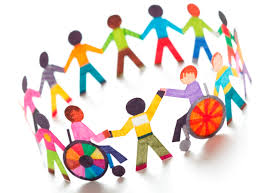BACKGROUND
The purpose of the EdTech 533 – YouTube for Educators course as offered by Boise State University during the 2017 Fall semester is to support graduate students in developing the media skills necessary for 21st century education. Some of the key deliverables for this course are as follows:
- Produce educational video for YouTube using digital video cameras and editing software.
-
Design and develop appropriate instructional activities that integrate online video.
-
Examine the benefits and controversial aspects of video sharing in the classroom.
ANALYSIS
The Big 3 Ideas
Though the lessons learned are too numerous to count, and further exploration is not practical for a short blog post, I feel that the following strategies will most positively impact and influence my future career as an educator and EdTech advocate:
- Know the copyright laws and how public domain and fair use interact. As authors and publishers of instructional content, it is imperative that public access (not necessarily public domain) resources are not adopted into our materials without explicit consent. Doing the opposite may not only decreases our credibility in the education sector, but can have legal consequences. When in doubt – create your own and cite the source.
- Creating a storyboard and media asset plan is a helpful strategy in creating large media projects. In future projects, I intend to merge both of these documents into a more cohesive and compatible format to effectively sequence media assets and increase productivity.
- In the past, I relied heavily upon screen recorders and animation files to portray microlearning. Through the combination of many graphic and video design strategies, and through the need to learn new video editing software, I was provided the opportunity to merge video art into a cohesive, instructionally sound mini-documentary.
YouTube in Education
Though skeptical of the prolonged use of YouTube, especially when applying such a strategy in an educational setting, this video platform is actually a powerful way to communicate with students in an asynchronous matter and provide just-in-time support. For example: (1) uploading help videos and homework examples could be “unlocked” by providing the “unlisted URL” to students at the right time, (2) using existing YouTube videos in combination with Google Forms to create a multimedia-rich experience for students through a media literacy assignment, and (3) encouraging students to create video deliverables to demonstrate mastery with course content and 21st century skills. Based upon these powerful uses of YouTube, it will become one of my main tools for assessment AS learning.
Media literacy and its Educational Impact
Media literacy assignments combine the power and ease of existing educational material already developed and shared on YouTube, with the opportunity for teachers and curriculum developers to create a relevant and meaningful learning experience through higher order thinking skills. First of all, it is important accurately define the term, Media Literacy, which entails all electronic or digital graphic and video design used to transmit messages, where Media Literacy Education is the field dedicated to teaching the skills necessary for such action. In order to become a successful student and responsible working citizen of the 21st century, learners must develop skills related to sophisticated information that impacts the way we think, feel, and act.
The main competencies of Media Literacy Education surround the following framework described below:
- Access – Identify pertinent and appropriate media information and effectively organizing delivery to share with others. This was demonstrated through the selection and sequencing of the GRIT tutorials in increasing difficulty of cognitive skills.
- Analyze – Challenge learners to use critical thinking skills to evaluate credibility of the source, along with message quality, point of view, and bias. This was demonstrated through questions such as, “do you believe that this perspective is based upon fact or opinion? Why?”
- Reflect – Encourage learners to internalize information and apply social responsibility to the topic presented. This is identified through questions like, “reflect on how you, as a student, can apply motivation strategies to remain “gritty” even when the material is hard and takes some time to understand.”
- Act – This includes a call to action for learners to apply what they have learned to future interactions in the workplace, school, community, or family. This call is demonstrated through problem-solving activities such as, “Now that you have been provided an opportunity to learn how GRIT can be used to master your academic goals, think about one area in which you continue to struggle despite all your hard efforts. Consider the name of the subject, the specific problem you are having, what solutions you have tried, who you have reached out to for help, and any progress you have made.”
Application of Skills
In this course, I was introduced to leveraging educational videos to teach units through a playlist lesson which can be assigned for homework or may be used as scaffolding for developing students. In addition to adding this resource to my lesson plans, I would like to use instructor vlogging. This is an easy way to communicate with students after the school day and provide a reminder for key content or assignment directions. It is also an effective way to introduce complex topics or new modules. Finally, I will be using mini-documentaries within applied contexts such as labs or project-based learning assignments to provide background information from a variety of sources in a concise, engaging format. After viewing, the students can begin their experiential learning project.
The AECT Connection
| AECT Standards for Professional Education Programs | Project | Demonstration of Mastery |
| STANDARD 1:
Content Knowledge (Managing) |
Media Asset Plan | “Candidates demonstrate the ability to effectively manage people, processes, physical infrastructures, and financial resources to achieve predetermined goals.”
The Media Asset Plan required me to identify, categorize, and assign media elements to the development of the mini-documentary by planning media creation processes. |
| STANDARD 3:
Learning Environments (Ethics) |
Mini-Documentary | “Candidates foster a learning environment in which ethics guide practice that promotes health, safety, best practice, and respect for copyright, Fair Use, and appropriate open access to resources. “
When developing the mini-documentary, I was required to adhere to copyright laws and fair use. This project helped me uncover new resources that are open access such as pixabay images and public domain scientific images sponsored by the CDC and FDA. |
| STANDARD 2:
Content Pedagogy (Using) |
Playlist Lesson | “Candidates implement appropriate educational technologies and processes based on appropriate content pedagogy.”
The playlist lesson required me to identify relevant and appropriate video resources to meet a learning objective. Further, this project mandated that the sequence of this media was effectively sequenced for a cohesive lesson covering the relative content that would meet intended learning outcomes. |



